




































Midweek Updates 17 Jan 2024
Google Banner Ad
This week in Midweek Updates
Kanardia HORIS - an affordable primary flight display or backup instrument.
Tanzania orders C-27J Spartans.
UN helicopter and personnel in al Shabaab hands.
EAA Young Eagles program sees a steady increase in 2023.
African air forces grappling with aircraft maintenance.
MD Helicopters announces record orders for 2023.
Belgium And Lockheed Martin celebrate rollout of first F-35A for Belgium.
Dassault Aviation receives an order for 42 Rafales for the French Air and Space Force.
Worldwide incidents and accidents.
This week in history - Jules Védrines claims an FF25,000 prize by landing an aircraft (a Caudron G-3) on the roof of a department store in Paris
Bonus video - Kit Planes for Africa factory visit.
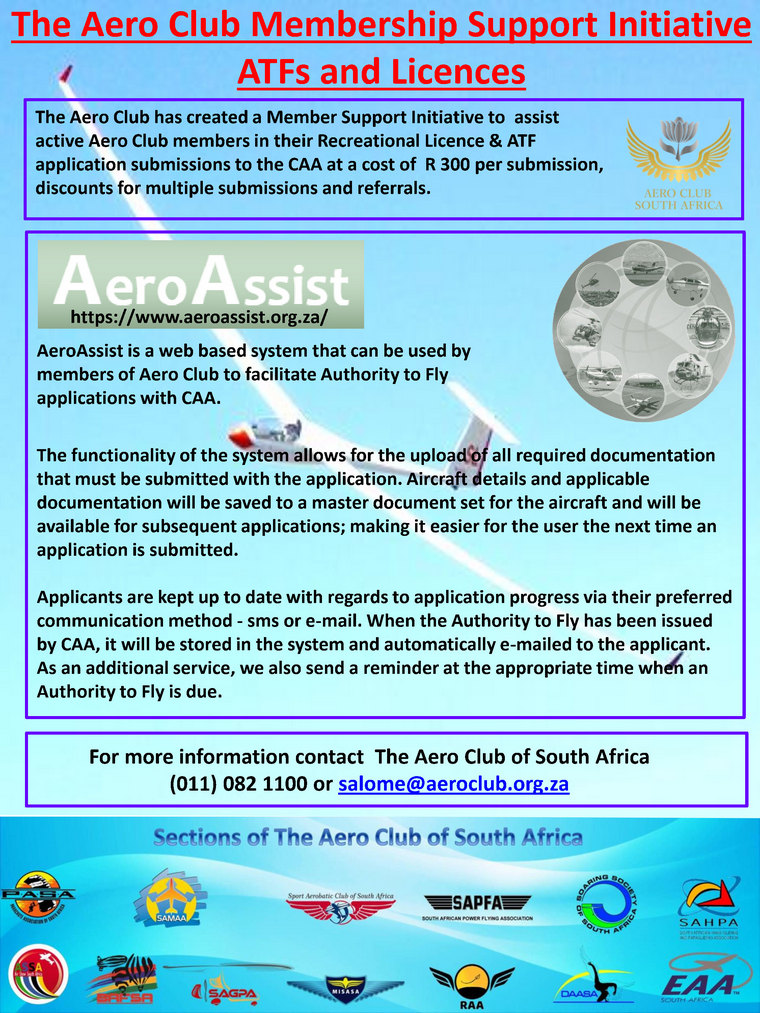



January
27 SAPFA Rand Airport Rally Challenge. Contact Frank at 083 269 1516
3 EAA Chapter 322 monthly gathering at EAA. Auditorium. Contact Neil Bowden E-mail: airadventuresa@gmail.com
8 MayDay SA golf day and industry dinner Serengeti Estate. Contact WhatsApp 083 797 7001 Website: www.mayday-sa.org.za
12 to 14 African Air Expo and conference CTICC, Cape Town. Website: www.airexpo.co.za
17 EAA Chapter 322 fly-in breakfast to Kitty Hawk. Contact Neil Bowden E-mail: airadventuresa@gmail.com
2 SAA Museum Society Specialised Tour limited to nine adults. Contact E-mail: events@saamuseum.co.za Cell: 076 879 5044
8 DCA Industry Roadshow Stellenbosch, Cape Town. Contact Ms Charmaine Shibambo E-mail: shibamboc@caa.co.za
8 to 10 Aero Club Airweek venue Mideelburg Airfield. Contact Sandra Strydom E-mail: sandra@aeroclub.org.za Tel: 011 082 1100
9 ANR at Aeroclub Airweek - Middelburg Airfield.
Contact Iaan Myburgh email iaanmyburgh@gmail.com cell: 082 449 2531
15 DCA Industry Roadshow Mangaung, Free State. Contact Ms Charmaine Shibambo E-mail: shibamboc@caa.co.za
16 EAA Chapter 322 fly-in breakfast to Brits airfield. Contact Neil Bowden E-mail: airadventuresa@gmail.com
23 Stellenbosch airshow - Fashkosh. Contact Sam Cell: 082 828 4553 or Anton Cell: 079 873 4567


KANARDIA HORIS - AN AFFORDABLE PRIMARY FLIGHT DISPLAY OR BACKUP INSTRUMENT
In today's economy, panel upgrades to all glass may be unaffordable, but just replacing one "steam gauge" with a Horis, will bring enormous benefits and a future upgrade path to add-ons like an auto-pilot.
Horis provides the following functions:
• Attitude indicator
• IAS with configurable V speeds
• TAS
• Altitude
• VSI
• Slip/skid
• OAT
• Ground Speed
• GPS track, with bug
• Additional screens with DI, G-meter, flight timer and clock
• Optional integrated backup battery
• Wind vector display with optional MAGU magnetometer
Available in 80 or 57mm light weight and compact packages with sunlight readable displays, Horis is available as master and slave versions where the PFD and DI displays are required continuously.
Installation could not be simpler - just connect pitot and static, install and connect the OAT sensor and GPS antenna on the glare shield and connect the plug-in power cable to your 12 or 28v power source.
All Kanardia instruments interconnect with a supplied plug-in CAN bus cable, so add-ons such as a magnetometer, or auto-pilot system are very easy to implement. Since Horis places all the flight data on the CAN bus, additional traditional looking instruments such as slave altimeter and airspeed indicator are further panel upgrade possibilities.
www.youtube.com/watch?v=y8JeBRq2W1U
www.youtu.be/kbcSCWH3uhE
www.pjaviation.co.za


Tanzania has ordered two C-27J Spartan transport aircraft from Italy's Leonardo, becoming the fifth African customer for the aircraft after Chad, Kenya, Morocco and Zambia.
A signing ceremony between Leonardo and the Tanzanian Ministry of Defence was held on 9 January, the Italian government reported, and attended by the Tanzanian Minister of Defence and National Service, Stergomena Tax, and Italian Ambassador to Tanzania, Marco Lombardi.
The deal will see Tanzania use the aircraft primarily for civil support duties, as the aircraft will be equipped with kits for humanitarian, search and rescue, and firefighting missions. One of their roles will be for firefighting operations on Mount Kilimanjaro and in the East African region.
The C-27Js will be operated by the Tanzanian Air Force's Transport Squadron at Dar Es-Salaam/Julius Nyerere air base, which flies two Shaanxi Y-8s, two Harbin Y-12s and a couple of Cessna 402s. A delivery date for the new aircraft was not revealed, nor contract value.
In Africa, the C-27J is operated by Chad (two), Kenya (three), Morocco (four), and Zambia (two), while other military customers who use the aircraft or have placed orders include Australia, Bulgaria, Greece, Italy, Lithuania, Mexico, Peru, Romania, Slovakia, Slovenia, and the United States (although the US Air Force divested the type to the US Coast Guard and US Special Operations Command owing to budgetary reasons).
The Spartan was developed from the G.222/C-27A, using the engines and systems of the Lockheed Martin C-130J Super Hercules to provide 30% lower operating costs than the G.222 and 35% greater range. It first flew on 24 September 1999.
The Spartan offers the ability to carry up to 60 troops in high density configuration and a maximum of 46 paratroopers. In the medical role 36 stretchers and six attendants can be carried. Normal payload is 9 000 kg for the C-27J, although maximum payload is around 11 tons.
Leonardo recently revealed the C-27J Next Generation (NG), which includes new cockpit displays, weather radar, modern navigation, and communications equipment, as well as aerodynamic improvements, including winglets.
In December 2023, the company celebrated the global C-27J fleet reaching the 250 000 flight hours milestone, citing "significant operational achievements through a wide range of defence and civil protection missions in the most challenging environments and operating conditions, where other aircraft can't be deployed."
The C-27J can be provided with in-flight refuelling, self-protection, secure communications and ballistic protection systems to operate in high-threat environments. With multiple roll-on/roll-off mission kits easily installed and transportable roll-on/roll-off mission systems, the C-27J can be quickly reconfigured. A wide spectrum of mission configuration/versions also include fire-fighting, Maritime Patrol (MP), Command-Control-Communications, Intelligence, Surveillance and Reconnaissance (C3ISR) and special operations versions.
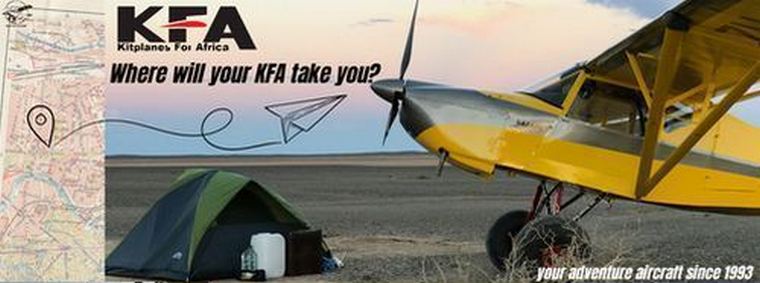
UN HELICOPTER AND PERSONNEL IN AL SHABAAB HANDS
The United Nations (UN), via spokesman Stephane Dujarric, is "concerned" about personnel aboard a helicopter flying under the world body's flag after it was reportedly seized by al Shabaab militants in Somalia. The rotorcraft was captured following an emergency landing
"Response efforts are underway, but I think you will all understand for the sake of the safety of all those involved we are not going to say anymore at this point," he said, adding "our primary concern is for their safety so we will leave it at that for now."
SAHAABLocal sources told the BBC that al Shabaab had seized the helicopter along with eight passengers and crew.
A UN memo on the incident seen by Agence France Presse said the helicopter crash-landed about 70 km southeast of Dhusamareb and no United Nations staff were on board as the helicopter was crewed by contract personnel.
One passenger was reportedly killed and two others fled. Several foreigners and two locals were on the helicopter, Somali military official Major Hassan Ali told Reuters.
"It was also carrying medical supplies and it was supposed to transport injured soldiers from Galgudud region," he was quoted as saying, as the helicopter was to support an offensive against al Shabaab by government troops around the town of Wisil.
Mohamed Abdi Aden Gaboobe, the minister of internal security of the Galmudug state, said the helicopter suffered an engine failure. The official added that six foreigners and one Somali national were onboard.
He told the Associated Press that al Shabab fighters detained five passengers, and another was shot dead while trying to escape. One passenger remained at large.


EAA's Young Eagles program continued its post-pandemic recovery in 2023, as more than 57,000 young people received flight experiences from volunteer EAA-member pilots as of 17 December 2023.
01"Getting the annual total of Young Eagles flights closer to pre-pandemic levels was a primary goal for the program this year and we are especially gratified for the more than 1,000 volunteer pilots flying Young Eagles for the first time," said David Leiting, EAA Eagles Program manager. "Our network of pilots and chapters have made this possible through singular flights, or by organizing Young Eagles rallies for their local communities to participate."
EAA AirVenture Oshkosh 2023 also marked the conclusion of the 30-for-30 challenge, marking the yearlong celebration of Young Eagles' 30th anniversary. There were 477 pilots who completed the challenge to fly 30 Young Eagles during the 30th anniversary year. Pilots who reached this milestone were awarded a commemorative polo shirt.
In 2023, the Young Eagles program surpassed a total of 2.3 million free introductory flights since its launch in 1992 and continues to be the largest aviation education program ever created. It also serves as the foundational program for EAA's many other youth aviation education programs, ranging from the AeroEducate online resource to the EAA Air Academy summer residence camps.
The EAA Young Eagles program is presented by Phillips 66 with additional support from Sporty's, United Airlines, Embry-Riddle Aeronautical University, Garmin, Lightspeed, Academy of Model Aeronautics, and Global Aerospace.
Pilots interested in flying Young Eagles can visit EAA.org/YEPilots for more information.
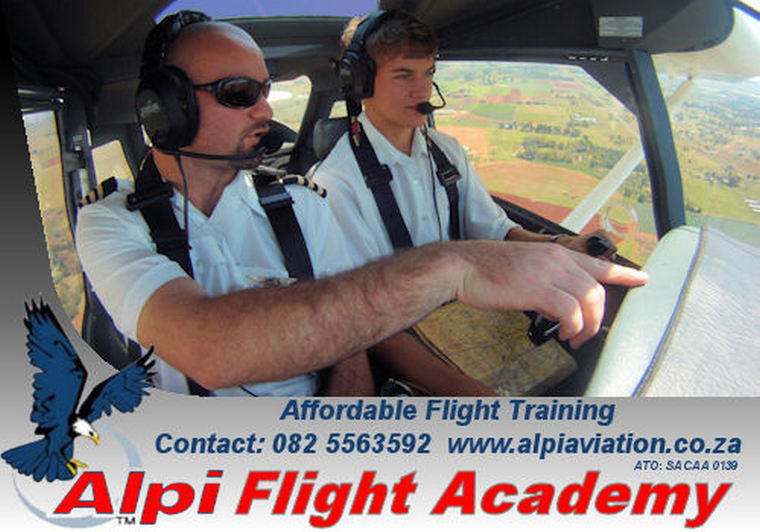
AFRICAN AIR FORCES GRAPPLING WITH AIRCRAFT MAINTENANCE
The South African Air Force is one of the largest in Sub-Saharan Africa. Its fighter jet fleet is among the most advanced overall on the continent, consisting of Saab JAS 39 Gripens. The fleet includes 11 attack helicopters.
But, more than half of the Gripens are grounded. And the most important helicopters in the fleet, the Oryx transport and Rooivalk attack helicopters, are largely grounded as well.
Of the 11 airframes in the Rooivalk fleet, only four were serviceable by mid-year, with seven either unserviceable or undergoing maintenance. Of the 23 engines in the fleet, only 13 were serviceable.
AFRICAN AIR FORCESThe situation with the Oryx helicopters was equally bleak. Within the fleet of 39 helicopters, just seven were operational. Thirteen were at Denel's state-owned servicing centre, and 19 were at squadrons awaiting servicing.
The problem was underfunding for maintenance and repair. The Rooivalks were in the midst of a 15-year overhaul of engine and transmission systems, but government officials said there was insufficient funding to do anything more than overhaul four engines. The status of the air force's helicopter fleet is not likely to improve in the foreseeable future, with its budget cut by 30% for 2023/2024.
Officials grounded the Gripen fleet in August 2021 after budget cuts and contractual hiccups left the air force without a maintenance contract. Without maintenance, they were not approved for flight, leaving the country without its main fighter jet.
A new airframe maintenance contract with Saab went into effect in September 2022 - but on a limited basis. After negotiations between the country's military procurement agency and the maintenance companies Saab of Sweden and GKN of the United Kingdom, the two sides reached a compromise. The three-year contract supports only 13 of the total Gripen fleet of 25 jets. The remaining 12 jets have been mothballed.
COMMON PROBLEM
It's a common problem for countries seeking to build an air force: purchasing aircraft but not budgeting for the cost of keeping them in the air. They either fail to budget sufficient money for maintenance or are forced to cut expenses. With the air forces usually being the smallest branches of the military throughout Africa, there is a consistent lack of funding to maintain a viable, useful air fleet. And it begins, researchers say, with countries buying the wrong aircraft.
In "African Airpower: a concept," a 2020 paper, author-educator Stephen Burgess wrote that many air forces "struggle to maintain disparate fleets of operational aircraft." He added: "While the fleets may look reasonably good on paper, the majority of aircraft are frequently grounded due to insufficient maintenance or lack of spare parts."
Another problem, he said, was something known as "a fleet of ones" - a fleet consisting of just one or two of too many kinds of platforms.
Kenya Air Force Commander Major General John Mugaravai Omenda said that problem is commonplace. During the 2023 African Air Chiefs Symposium in Dakar, Senegal, he told Africa Defense Forum (ADF) that his country's wide assortment of military aircraft can be difficult to maintain and get parts for.
"Variety (of aircraft) is the first challenge," he said. "So, we need to source wide and large for spares. Most of these assets are aged, and their support is rapidly going down. It's a bit demanding in terms of acquisition of these parts and training of the technicians to maintain them."
TOO MANY PLATFORMS
A Zambia Air Force C-27J Spartan.
The 2023 World Air Forces Report shows the extent of the problem of too many platforms in African air forces. The continent has 54 countries, but only 28 have air forces. There are a huge variety of fleets. Some examples:
Zambia, regarded as having one of Southern Africa's best air forces, has a total fleet of about 100 aircraft, with 16 different platforms. Of those platforms, three have only one aircraft; four platforms have only two.
Tanzania has about 40 aircraft, with 14 platforms. Three platforms have one aircraft each; seven more platforms have just two.
Kenya has about 80 aircraft, with 18 platforms. Eight of its platforms have no more than three aircraft.
Having too many platforms creates a host of problems. It's difficult to stock sufficient spare parts for so many varied aircraft. Each type has its own maintenance issues and requires special training to repair. Many have to be sent to other countries for repairs. Many times, spares are no longer available. And it's hard to train pilots to fly so many types of aircraft.
In a report, "Building Africa's Airlift Capacity: A Strategy for Enhancing Military Effectiveness," authors Birame Diop, David Peyton and Gene McConville wrote: "In addition to high costs, airlift platforms need support over the long term. The lifecycle cost of airlift systems, including maintenance, fuel, and crew expenses, often exceeds the initial purchase price of individual aircraft. Overlooking these costs has resulted in aircraft that are frequently out of service or operated while failing to meet safety standards."
Burgess noted that some of Africa's air forces also have a problem with staffing.
"A less talked about challenge is retention," he wrote. "Few African air forces have service commitments. In many countries, the minute an airman is adequately trained in key aerospace disciplines, he becomes extremely marketable to the civilian aerospace industry and separates from the service. Thus, air forces are left with an inadequate number of motivated airmen, many of whom are doing admirable work with insufficient training. The result is inevitable; largely grounded fleets, poor flight safety records, and poor reputations within the defence structure."
In an interview with ADF at the Dakar symposium, Brigadier General Hermalas Ndabashinze, chief of the Burundi Air Force, said that one of his biggest expenses is pilot training, usually in Europe. The Burundi Air Force is one of the smallest on the continent, but he said that maintaining his air fleet "is a common challenge" that most African air forces face. From buying spare parts from manufacturers to having an entire aircraft shipped to a manufacturer for an overhaul, "it's big money, it's a challenge."
Burgess wrote that, "in most cases, an air force would be best served operating no more than a few platforms with enough of each aircraft to maximize training and supply efficiencies."
SUCCESS STORIES
A Nigerian Air Force A-29 Super Tucano.
Many air forces are changing their approach to buying aircraft. Some have concluded that they need smaller, less-expensive aircraft. Others have determined that they need to build sophisticated maintenance systems into their defence budgets.
BUILDING IN SUPPORT: Less than two years after the Nigerian Air Force added 12 A-29 Super Tucano light aircraft to its fleet, a $38 million project to build new support facilities for the aircraft was completed at Kainji Air Base.
The base improvements were delivered in two main phases, with the first phase completed in 2021 to allow for the safe delivery of the first Super Tucanos. The small fighter planes have become a critical part of Nigeria's war on the terrorist group Boko Haram and associated insurgents.
The US Army Corps of Engineers oversaw the construction of the projects. Some of the major construction upgrades include the creation of a munition storage area with earth-covered ammo storage. The area also includes a munitions maintenance and assembly facility, a new taxiway and a cargo pad. The facility now includes mission planning and debriefing rooms and a battle aviation training device.
The Nigerian Air Force also awarded wings to six additional pilots on the Super Tucano, who constitute the last batch of a total 24 pilots trained to fly the A-29s.
REGIONAL MAINTENANCE CENTER: Morocco plans to become a military aircraft maintenance centre for neighbouring nations and has signed agreements with Belgian and US companies for the maintenance and support of F-16 fighter jets and C-130 Hercules cargo planes. The agreements, according to Breaking Defence, are with Belgian companies Sabca and Sabena Aerospace, and Lockheed Martin of the US Morocco signed the agreement on 14 April 2022.
Morocco "expects to maintain the F-16 and C-130 Hercules not only for its air force but also for neighbouring African countries operating these aircraft," Moroccan military expert Abdel Hamid Harfi told Breaking Defence.
The partnership includes the construction of a 15,000-square-meter maintenance, repair, overhaul and upgrade centre for military aircraft and helicopters at Benslimane Airport. The facility will support up to 300 new jobs.
BUILDING AN OVERHAUL CENTER: In April 2023, Ugandan President Yoweri Museveni commissioned the country's first locally overhauled Mi-24 combat helicopter. The National Enterprise Corporation (NEC), the production and commercial arm of the Uganda Peoples' Defence Forces, performed the extensive overhaul.
Uganda, along with the NEC and Pro-Heli International, commissioned the helicopter maintenance, repair and overhaul plant at the Nakasongola Air Force Base. The Mi-24 is a key asset in Uganda's military arsenal and has been used extensively in counterinsurgency operations against rebel groups. The 2023 World Air Forces Directory reported that Uganda has five Mi-24s.
The Ugandan Mi-24 overhaul involved a complete teardown, followed by an inspection and repair of all its components. Workers upgraded the helicopter's engines, avionics and weapons systems. Pilots took the finished helicopter on a series of test flights to ensure that it was fully operational and could meet the demands of its intended missions. Officials said the overhaul took 15 months, instead of the usual turnaround time for an outsourced overhaul of three years.
The helicopter received new dust filters, which could indicate foreign deployment in the future. It also was upgraded for day and night operations and for deployment against cattle rustling and regional terrorism.
A month earlier, Uganda announced that 12 pilots for Mi-28NE attack helicopters and 52 maintenance engineers had completed an eight-month training course at Soroti Air Force Wing.
TRAINING INCLUDED: The Nigerien Air force officially added a third C-130 Hercules to its cargo fleet in a ceremony in early 2023. The package included maintenance training.
It is the final C-130 in a deal with the US government, which delivered the first aircraft in January 2021. The package included training for 16 Nigerien pilots, 19 maintenance personnel, five baggage handlers and a flight engineer. Nigerien pilots trained in the United States, and the first female pilot in the Nigerien Air Force completed her six-month training in April 2020.
In January 2020, US Africa Command handed over a new C-130 hangar worth $7 million at Air Base 201 near Agadez, Niger.
Written by Africa Defence Forum and republished with permission. The original article can be found here.


MD Helicopters, LLC (MDH) proudly announces record orders for the fiscal year 2023. The company experienced an increase in demand, resulting in the highest number of annual orders since 2008.
MD Helicopters credits this accomplishment to its renewed commitment to customer satisfaction, enhancing aftermarket services, and striving for excellence in both the military and commercial sectors. The company's focus and unwavering dedication to providing top-tier products and services have resonated with customers worldwide and across various markets, resulting in the substantial growth observed in 2023.
Among the key contributing factors to this success are significantly improving customer support, increased investment in direct communications with customers, enhancing manufacturing efficiencies, ensuring in-stock spares availability, and maintaining healthy supplier relationships. This strategic approach has not only strengthened MDH's market position but has solidified its reputation as a rotorcraft industry leader.
In addition to the Nigerian Federal Government (12 aircraft) announced earlier this year, recent commercial transactions involved MD 530Fs designated for multi-use missions. These additions include VIP aircraft sales, featuring an expansion to the Clemens Aviation fleet, procurement by the United States Department of Agriculture for agricultural missions, and fulfilling various utility needs, such as those of WCF Aerospace, representing Skydance Helicopters that specializes in power and utility services, amongst others. MDH is actively pursuing a well-rounded approach, emphasizing both military and commercial sales and showcasing the positive impacts of the company's recent changes.
"This achievement is a testament to our dedicated team and the trust our customers have in us," said Jason Lindauer, Vice President, Sales and Marketing of MD Helicopters. "We have an aggressive campaign underway to meet face-to-face with our customers, suppliers, and prospects to gather firsthand feedback and to continue to strengthen relationships. Our commitment to excellence remains steadfast, and we're excited about the opportunities ahead."


Lockheed Martin [LMT] presented Belgium's first F-35A Lightning II to the Belgian government during a rollout ceremony at Lockheed Martin's F-35 production facility. This event marks a significant milestone in the Belgian Air Force's history and strengthens the alliance between the United States and Belgium, a key NATO ally.
"The introduction of the F-35 within the Belgian Air Force will enable us to continue to fulfil all our missions in the coming decades, in cooperation with our allies and partners in NATO, the EU and beyond," said Chief of Defence for the Belgian Armed Forces, Admiral Michel Hofman.
Building on the strong legacy of the F-16, the F-35 will provide the next generation of air power to ensure the Belgian Air Force can fulfil its NATO missions and protect the alliance's key interests. By serving as the most advanced 21st Century Security solution, the F-35 will connect assets across domains to increase situational awareness for Belgium and its key European partners.
"We congratulate Belgium on this significant achievement," said Lt. Gen. Mike Schmidt, program executive officer, F-35 Joint Program Office. "The growth of the F-35 in Europe strengthens international partnerships, interoperability, and warfighting capability; and emphasizes the importance the aircraft provides as a deterrent against potential adversaries."
"With its unmatched capability, connectivity and interoperability, the 5th Generation F-35 will enable the Belgian Air Force to stay ahead of threats for decades to come," said Greg Ulmer, executive vice president, Lockheed Martin Aeronautics. "Today's milestone would not have been possible without the strong partnership and key contributions from our close partners in Belgian government and industry."
Senior government and military leaders from Belgium and the United States attended the ceremony. Belgium's program of record calls for 34 F-35As. The first aircraft, designated AY-01, will be delivered to the Belgian Air Force next year and will be based at Luke Air Force Base, Arizona, where international F-35 pilot and maintainer training takes place.
The F-35 also creates high-quality, long-term employment opportunities for Belgium. Through the Essential Security Interest (ESI) program, Lockheed Martin will bring cutting-edge manufacturing techniques and benefits, expanding Belgian industry's skills and knowledge and providing high-tech jobs for Belgians for decades to come.
F-35s are now operating from 31 bases worldwide. To date, Lockheed Martin has delivered more than 980 F-35s, trained more than 2,250 pilots and 15,125 maintainers, and the F-35 fleet has surpassed 768,000 cumulative flight hours. Lockheed Martin continues to work side by side with F-35 operators to ensure allies remain ahead of the evolving threat.
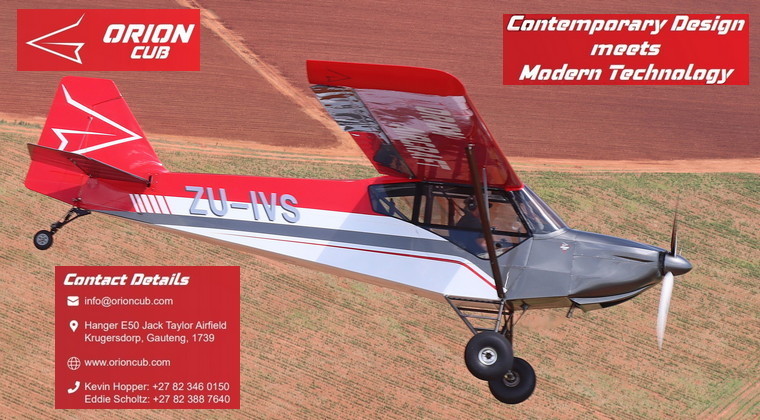
At the end of December 2023, the French Defence Procurement Agency (DGA) awarded Dassault Aviation an order for 42 Rafale combat aircraft, known as "tranche 5", for the French Air Force (AAE).
"On behalf of Dassault Aviation and the 400 companies involved in the Rafale program, I would like to thank the Ministry for the Armed Forces, the DGA and the AAE for their renewed confidence. We are ready and determined to use our skills as prime contractor and complex systems integrator to serve the sovereignty of our nation. This military industrial sovereignty is an exception in Europe. It guarantees the superiority of our combat aviation. It is also an asset for diplomatic influence and an economic strength in export trade", says Éric Trappier, Chairman and CEO of Dassault Aviation.
The Rafale is a technical, operational and commercial success which continues to position France at a world-class level in combat aircraft that has been designed to evolve by successive standards, in order to adapt the latest technologies to user needs. Standard 4, focusing particularly on connectivity, is under development. Standard 5, which is currently preparing for launch, will bring new capabilities in collaborative combat.
The Rafale is a success in the export market, with seven customer countries to date. The order book, plus the new "tranche 5" contract, secure production activity for the next ten years.
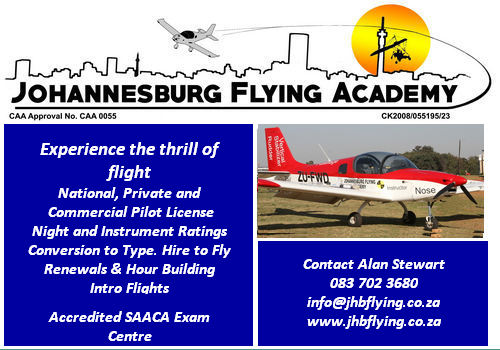

Chile, near Panguilemo Airport: A Thrush S-2R-T660 Thrush 710P struck a utility pole, lost control, and crashed onto Ruta 5 near Panguilemo, Chile. The aircraft hit a car and burst into flames. The pilot died and several persons were injured on the ground and the aircraft was destroyed by fire. A video of the accident shows the aircraft performing a low altitude water drop parallel to the road and the runway of Panguilemo Airport (SCTL).
USA, near Poolville, TX: A Cessna 310R twin engine airplane, N252DL, was destroyed when it crashed near Poolville, Texas. The private pilot and two passengers (his two sons) were fatally injured. The flight originated from Carrizo Springs, Texas, and was destined to Bridgeport.
Australia, Lizard Island Airport (YLZI), Lizard Island, QLD: The Cessna 208B Grand Caravan overturned during an attempted emergency landing at Lizard Island Airport (LZR), Australia. Two of the aircraft's 10 occupants sustained injuries. The aircraft was substantially damaged.
ADS-B data suggest that the flight took off from runway 12 at 06:47 local time, heading over the Great Barrier Reefs to Cairns Airport. A few minutes after departure, at an altitude of about 4000 feet, the aircraft made a descending turn back to LZR. According to local media, the engine had lost power. The aircraft then overshot the runway on landing and overturned.



19 JANUARY 1919
Jules Védrines claims an FF25,000 prize by landing an aircraft (a Caudron G-3) on the roof of a department store in Paris. Védrines is injured and his aircraft is damaged beyond repair in the hard landing in a space only 28 metres (92 ft) x 12 metres (39 ft).

He then returned to France, where he gained his pilot's license (no. 312) on 7 December 1910 at the Blériot school at Pau. His rise to become one of the most prominent pilots of the time started when he won the 1911 Paris to Madrid air race in May 1911 flying a Morane-Borel monoplane.
That year he also came second in the Circuit of Britain race and third in the Circuit of Europe race.
In 1912, flying the Deperdussin 1912 Racing Monoplane he was the first person to fly an aircraft at more than 100 mph (160 km/h) and he also won the Gordon Bennett Trophy race.
Vedrine passed away on 21 April 1919.

Kit Planes for Africa Factory Visit

Google Banner Ad
 |
 |
 Copyright © 2024 Pilot's Post PTY Ltd
The information, views and opinions by the authors contributing to Pilot’s Post are not necessarily those of the editor or other writers at Pilot’s Post.
Copyright © 2024 Pilot's Post PTY Ltd
The information, views and opinions by the authors contributing to Pilot’s Post are not necessarily those of the editor or other writers at Pilot’s Post.